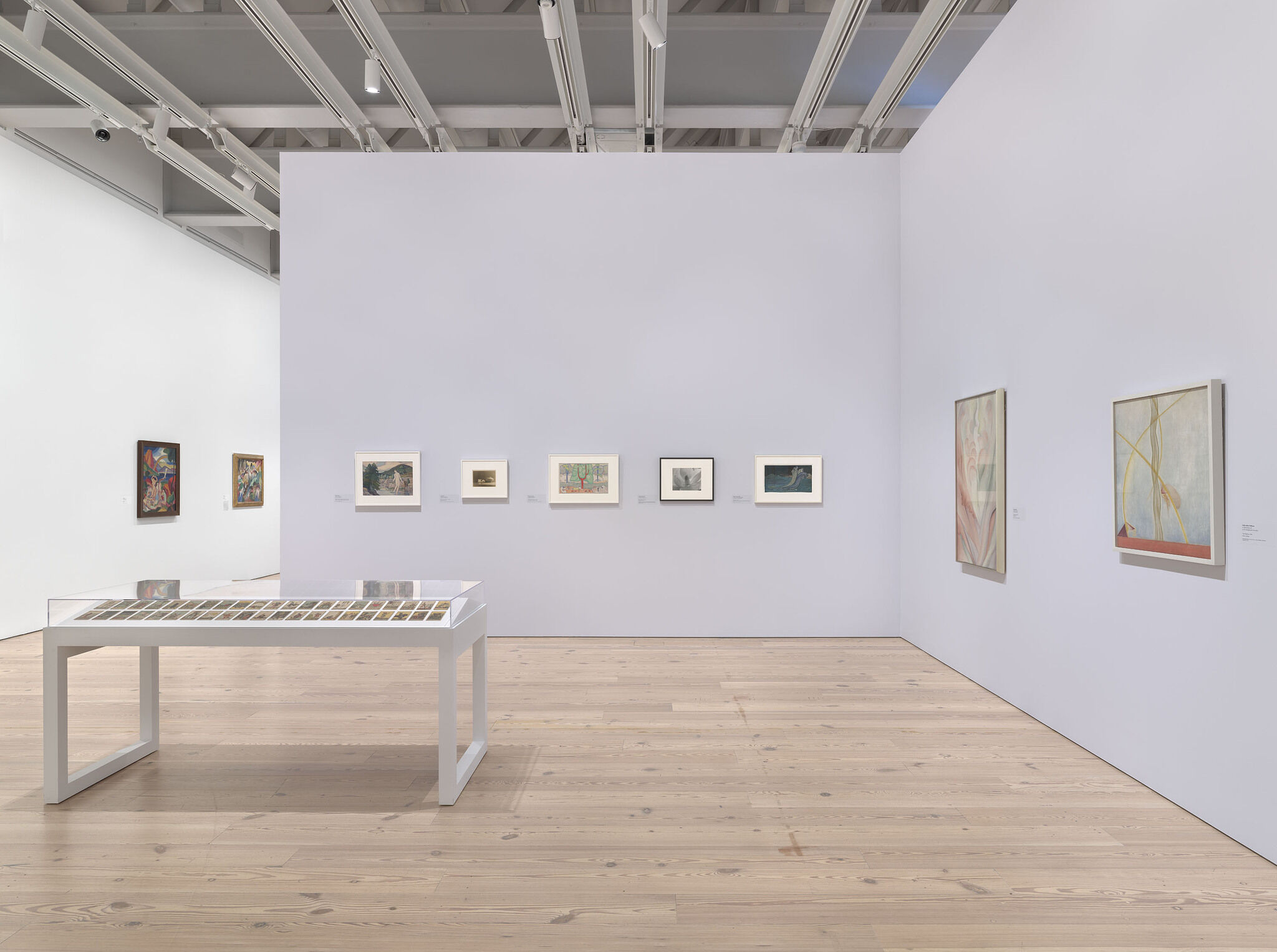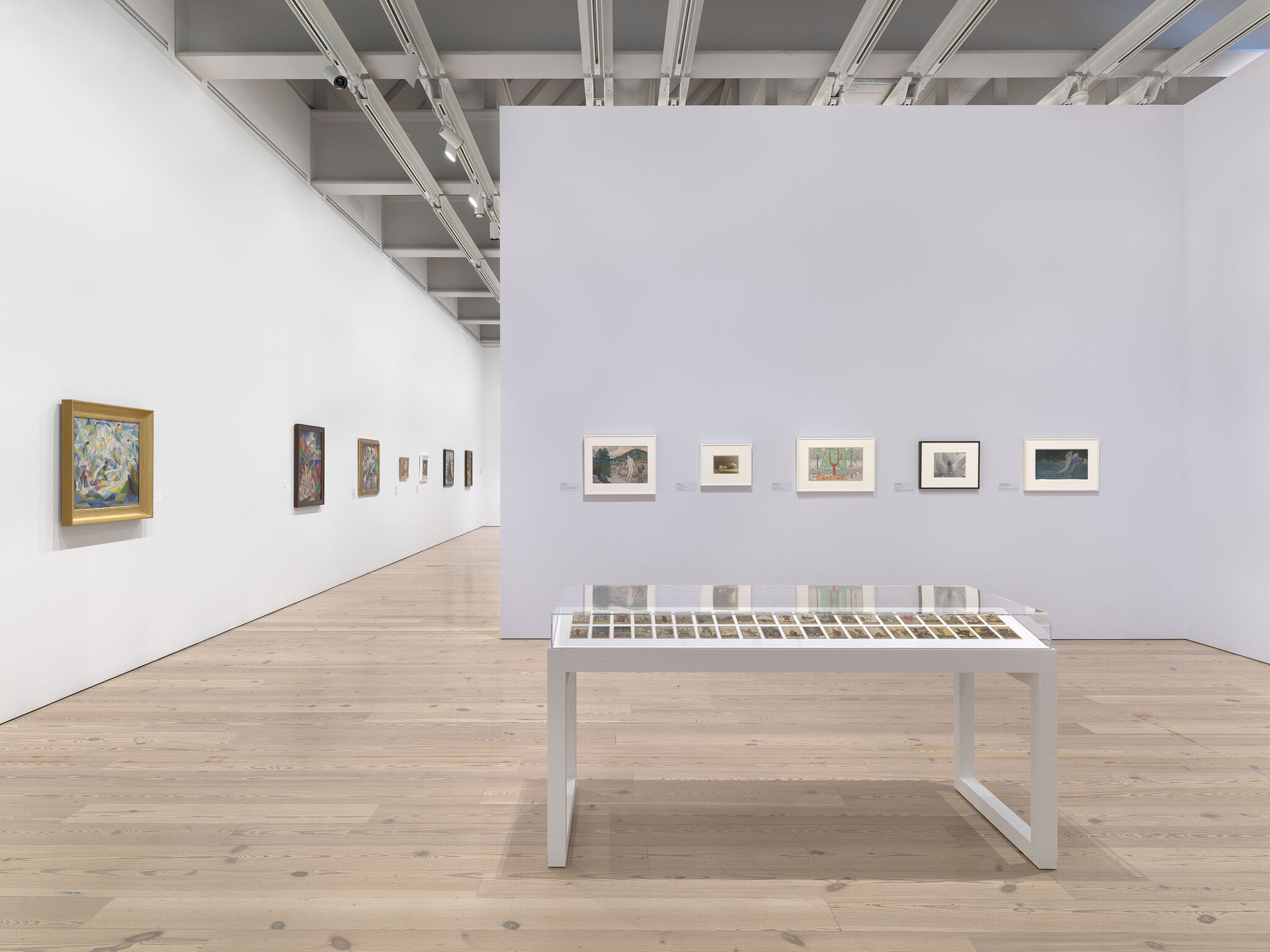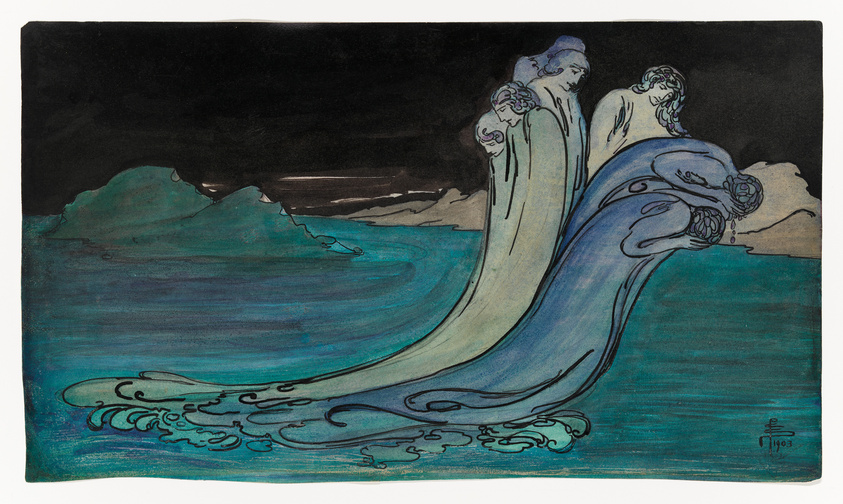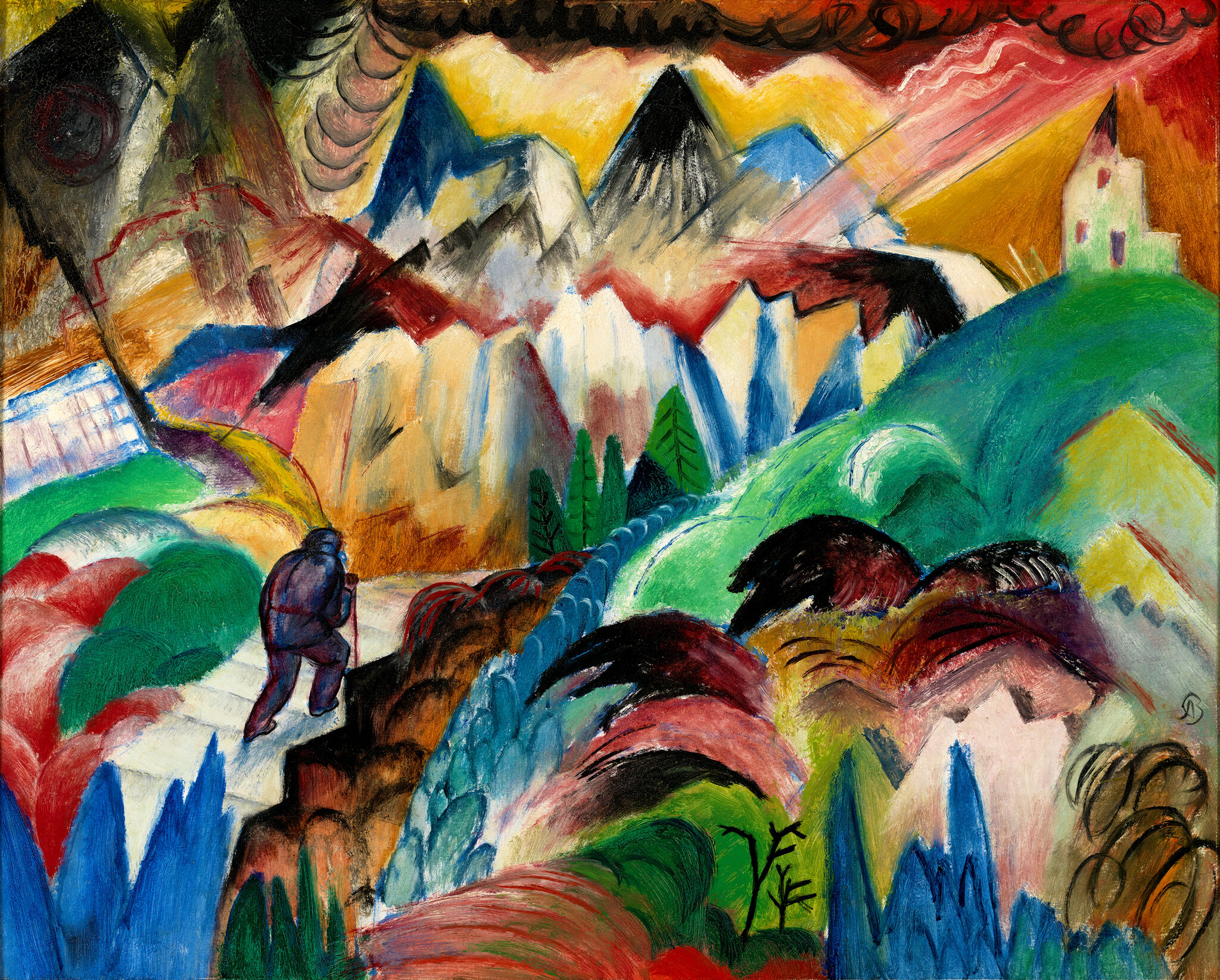Not on view
Date
1903
Classification
Drawings
Medium
Watercolor, brush and ink, and graphite pencil on paper
Dimensions
Sheet: 10 1/4 × 17 3/4in. (26 × 45.1 cm)
Accession number
60.42
Credit line
Whitney Museum of American Art, New York; gift of Mrs. Sidney N. Heller
Rights and reproductions
© artist or artist's estate
Audio
-
Pamela Colman Smith, Rider-Waite Tarot Deck and The Wave
In At the Dawn of a New Age: Early Twentieth-Century American Modernism (Spanish)
0:00
Pamela Colman Smith, Rider-Waite Tarot Deck and The Wave
0:00
Narrator: La artista Pamela Colman Smith ilustró estas cartas de tarot en 1909. Hoy en día, esta es la baraja más utilizada, con aproximadamente cien millones de ejemplares en circulación. Las cartas de tarot contienen símbolos arquetípicos y se dividen entre los arcanos mayores y los arcanos menores; la palabra arcano significa “secreto”. Entre los arcanos mayores se encuentran personajes como el Loco, el Mago y el Diablo, y también fuerzas como la Rueda de la Fortuna. Los arcanos menores están numerados y se dividen en bastos, oros, copas y espadas. Deben barajarse y leerse como una suerte de adivinación, dependiendo de las cartas que se saquen. Sin embargo, para muchas personas, no son más que una oportunidad para la reflexión psicológica.
Melissa Staiger: Hola, soy Melissa Staiger y en 2019 fui cocuradora junto a Colleen Lynch de una exposición de arte sobre Pamela Colman Smith en la Biblioteca Pratt.
Hay tantos detalles en cada una de estas cartas. La verdad es que no sé cómo logró crear esta baraja en tan poco tiempo. Es una genialidad colocar todos estos pequeños detalles de forma simbólica en las cartas. Siempre estoy aprendiendo algo nuevo de la baraja de Smith.
Narrator: Estos detalles guían a los lectores a la hora de interpretar la historia que cuentan las cartas. Como artista, a Smith se le daba muy bien el papel de narradora. Se dedicaba mucho al teatro, incluido el diseño de vestuario y la escenografía. También puso en escena sus propias representaciones de cuentos populares de Jamaica, que es donde había crecido. Al igual que a muchos artistas alrededor del cambio de siglo, le interesaba el misticismo y desarrolló una forma personal de espiritualidad. Su enfoque sobrenatural también se refleja en la acuarela llamada The Wave, expuesta en las inmediaciones. Figuras afligidas se alzan por encima del océano mientras sus túnicas parecen seguir la estela de las olas.
Melissa Staiger: En sus obras, empezamos a ver que las figuras se convierten en elementos, como montañas. Las vemos como agua. Cuando pienso en los símbolos del tarot, sabes, todos son elementales.
-
Pamela Colman Smith, Rider-Waite Tarot Deck and The Wave
In At the Dawn of a New Age: Early Twentieth-Century American Modernism
0:00
Pamela Colman Smith, Rider-Waite Tarot Deck and The Wave
0:00
Narrator: The artist Pamela Colman Smith illustrated these Tarot cards in 1909. Today, it is the most popular deck used, with an estimated one hundred million copies in circulation. Tarot cards contain archetypal symbols, and are divided between the major arcana and minor arcana—arcana meaning “secrets.” The major arcana includes characters like the Fool, the Magician, and the Devil, as well as forces such as the Wheel of Fortune. The minor arcana are numbered, and are divided into Wands, Pentangles, Cups, and Swords. They’re meant to be shuffled and read as a form of divination, depending on which cards are drawn. For many people, though, they simply offer an opportunity for psychological reflection.
Melissa Staiger: Hi, I'm Melissa Staiger. I co-curated an art exhibit about Pamela Colman Smith at the Pratt Library in 2019 with Colleen Lynch.
Each of these cards has so many details. I actually don't know how she did this deck in such a short time. It's like a genius quality to symbolically place all these small little details on the cards. I'm always learning something new off her deck.
Narrator: These details guide readers in interpreting the cards’ narrative. As an artist, Smith was well-suited to being in the role of a storyteller. She was heavily involved in theater, including costume and set design. She also staged her own performances of folktales from Jamaica, where she had grown up. Like many artists around the turn of the century, she became interested in mysticism, and developed a personal form of spirituality. Her otherworldly approach is also reflected in a watercolor called The Wave, on view nearby. Grieving figures rise up out of the ocean, their robes seeming to trail into the waves.
Melissa Staiger: In her works, we start to see figures becoming elements like mountains here. We see them as water. When I'm thinking of the symbols in the tarot, you know, they're elemental.
Exhibitions
Installation photography
-


Installation view of At the Dawn of a New Age: Early Twentieth-Century American Modernism (Whitney Museum of American Art, New York, May 4, 2022–January 2023). From left to right: Carl Newman, Untitled (Bathers), 1917; Albert Bloch, Mountain, 1916; Adele Watson, Untitled (Figure Floating on Lake), 1916-25; Taizo Kato, Bowl with Two Flowers, 1920; Marguerite Zorach, Landscape with Figures, 1913; Imogen Cunningham, Magnolia Blossom, 1925; Pamela Colman Smith, The Wave, 1903; Georgia O’Keeffe, Flower Abstraction, 1924; Edith Clifford Williams, Two Rhythms, 1916. In vitrine: Pamela Colman Smith, Rider-Waite-Smith Tarot Deck, 1909. Photograph by Ron Amstutz
From the exhibition At the Dawn of a New Age: Early Twentieth-Century American Modernism
-


Installation view of At the Dawn of a New Age: Early Twentieth-Century American Modernism (Whitney Museum of American Art, New York, May 4, 2022-January 2023). From left to right: Joseph Stella, Der Rosenkavalier, 1913-14; Carl Newman, Untitled (Bathers), 1917; Albert Bloch, Mountain, 1916; Adele Watson, Untitled (Figure Floating on Lake), 1916-25; Taizo Kato, Bowl with Two Flowers, 1920; Marguerite Zorach, Landscape with Figures, 1913; Imogen Cunningham, Magnolia Blossom, 1925; Pamela Colman Smith, The Wave, 1903. In vitrine: Pamela Colman Smith, Rider-Waite-Smith Tarot Deck, 1909. Photograph by Ron Amstutz
From the exhibition At the Dawn of a New Age: Early Twentieth-Century American Modernism


